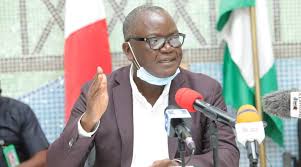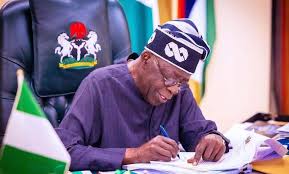EFCC forfeits N3.7 Billion property linked to General, others

EFCC forfeits N3.7 Billion assets linked to General, others
By Olubunmi Adekunle
The Economic and Financial Crimes Commission, EFCC, on 14 February, 2022, secured the final forfeiture of 20 (twenty) landed properties valued at over N3, 007, 000, 000 (Three Billion and Seven Million Naira) belonging to a top military officer but controlled through proxies, a statement by Wilson Uwujaren made available to Irohinoodua stated.
The proxies include late General Aminu Maude, Honourable Hassan Nalaraba and Tanimu Abdullahi Yunusu; as well as companies such as Atlasfield Integrated Services Nigeria Limited, Marhaba Events Place, Aflac Plastics and Atlasfield Gas Plant Limited.
Justice N. E Maha of the Federal High Court sitting in Abuja, granted the Order while ruling on the application by counsel to the EFCC, Cosmos Ugwu and Musa Isah.
The Court had in May, 2020 ordered the interim forfeiture of the properties following an ex parte application by the Commission, alleging that the assets were proceeds of unlawful activities.
The court, having considered the application vis-a-vis Section 17 of the Advance Fee Fraud and other Fraud Related Offences Act, 2006, more particularly sub-sections 1 and 3 thereof, granted the prayers of the Commission for an interim forfeiture and directed the publication of notices, alerting anyone with interest in the properties to show cause why they should not be forfeited to the Federal Government of Nigeria.
In the absence of any contestation, the court today ordered the final forfeiture of the properties.
The forfeited properties, situated on lands valued at over N3, 007, 000, 000 (Three Billion and Seven Million Naira) are located in different parts of Kano, Katsina, Calabar (Cross River State) and Kaduna. They included Fuel Stations, Event Centers, Plazas, Block Industries, Truck Assembly Plant, Polythene Production factory and table water factory.
Some of the properties include undeveloped plot located at Rake, Adjacent to Dara Orthopedic Hospital, Kano valued at N300, 000, 000 (Three Hundred Million Naira); 117 hectares of land located at Adiabo, Oduapani L,G covered by Certificated of Occupancy No. OD/23/2011 dated 21/2/ 2011 in Calabar, Cross River State, valued at N386, 000, 000 (Three Hundred and Eighty Six Million Naira); Truck Assembly at Ring Road, adjacent to AA Affa Filling Station, Kano, valued at N206, 000, 000 (Two Hundred and Six million Naira) and Marhaba Event Centre, Guda Abdulahi Road Farm Centre, Kano valued at N250, 000, 000 (Two Hundred and Fifty Million naira).



